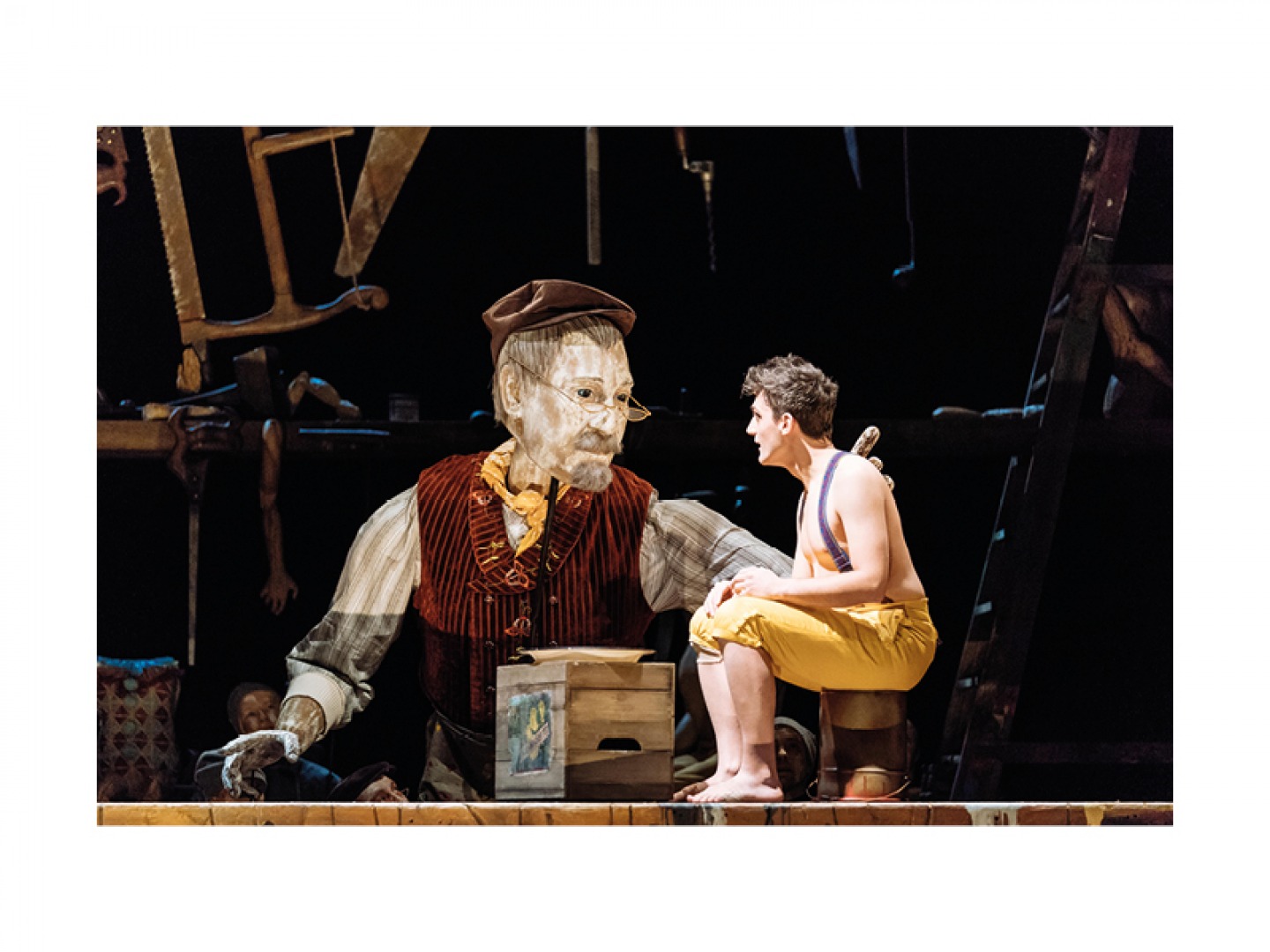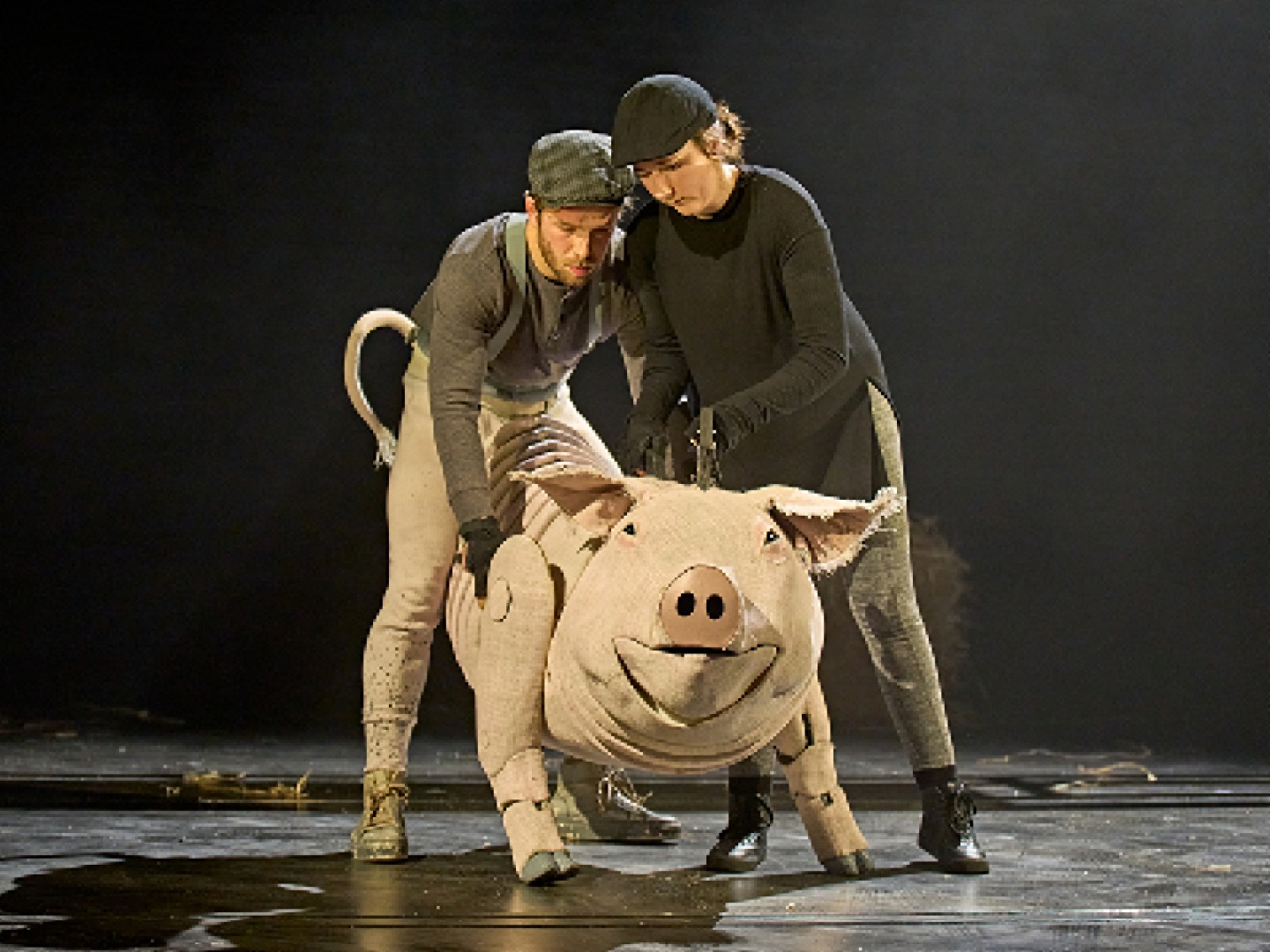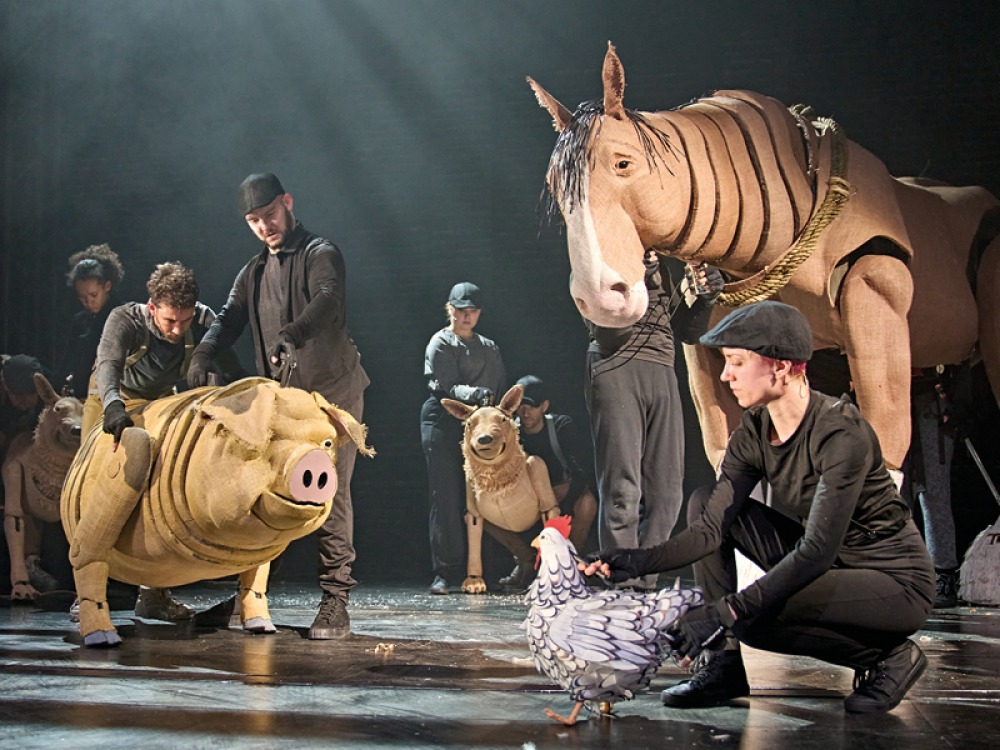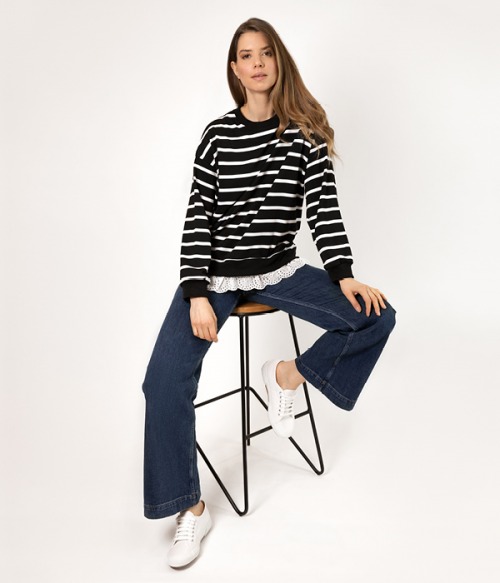Meet the Puppeteer: Toby Olié

Puppeteer Toby Olié reveals why puppets aren’t just child’s play as we discover his most recent challenge – creating and directing more than 30 life-sized puppets for the stage adaptation of Animal Farm
Toby found his way into the world of puppetry when he was just seven. He recalls watching Sesame Street as a child, and later finding an Usborne How To Make Puppets book in the school library. ‘Throughout my childhood, I made things out of cardboard, Blue Peter-style,’ he says. ‘I was really aware of just trying things out – experimenting with materials, having fun, making a mess and seeing what worked. Puppetry for me was a meeting point between drama (which I loved at school) and art. It always felt like the middle ground, and thankfully I had a very supportive family and amazing teachers – especially at the local high school when it came to the creative side of things. Everyone was so encouraging and when it came to university I knew I wanted to study puppetry – but where to do something so obscure?’ Thankfully, the Royal Central School of Speech and Drama in London had a puppetry course which allowed Toby to hone his skills.
From there, Toby was recruited into War Horse at the National Theatre. He played the hind of Joey the horse in the original production, before moving to the head for the West End. Since then, Toby has created puppets for spectacular shows including Pinocchio at the National Theatre, Alice’s Adventures in Wonderland at the Royal Ballet and Disney’s new staging of The Little Mermaid in Holland, Russia and Japan. He’s also founded his own company, Gyre & Gimble, with his former War Horse colleague Finn Caldwell. ‘I’ve been very lucky to continue my puppetry work ever since,’ says Toby.
‘Doing a puppetry degree and going straight into War Horse was a massive learning curve for me and I feel like it acted as an amazing MA in theatre making,’ Toby recalls. ‘Not only was it a great group of collaborative artists all trying to create a piece of work that hadn’t really existed before (a puppet lead character, and a lead character that doesn’t speak), everyone was just learning as they went. The thing I really took from that show was how less is more in theatre. The more you invite your audience into a story through both the acting and the aesthetic, the more the audience fill in the gaps and imagine a bright, beautiful, hilly countryside – or the rain and muddy ground – through the way the puppets are moving.
‘As puppeteers, we try to push as much as possible to celebrate small actions (things like breathing or stumbling, which you take for granted when watching an actor perform). When an audience watch a puppet they see very mundane things like they’re seeing those actions for the first time. You inherently know that object can’t do that, but it’s been a decision made by the person operating it, and that feels really exciting.’


Toby’s most recent project saw him take on arguably his biggest challenge yet. For a stage adaptation of the famous George Orwell fable, Animal Farm, which recently had a one-week run at Newcastle’s Theatre Royal, Toby created and directed more than 30 life-sized puppets. Every character in Animal Farm is, as you might have guessed, an animal – apart from the farmer, and with only 14 puppet operators Toby had to work out exactly who would be where, and when, to bring the puppets to life.
Always thorough, Toby goes through every stage of the process when creating puppets for a show – and Animal Farm is a good example of that. ‘Meeting with Rob Icke [the director], who knew he wanted to adapt the show with puppets but didn’t really know how, was exciting. We worked it out at the conceptual stage to question the aesthetics and movement of the piece. I’m part of the creation of these characters from the beginning and that’s a really satisfying and detailed process to be involved in.’

But how exactly does that work? ‘The majority of animals on Animal Farm are medium sized – pigs, dogs, goats,’ says Toby. ‘When we knew we had a cast of 14 performers, I looked at Rob’s first draft of the script and had to work out how many hands we’d have per character. The biggest puppet, Boxer the horse, needed three people because he’s huge, so the medium characters would have one or two puppeteers per character. We came up with a plan of having one puppeteer operating the head and the breathing of the character and the second puppeteer operating the front legs while their human legs formed the back legs of the animal. Practicalities like that dictate my design choices. It was really great working with Rob and Bunny Christie, the designer, working out how the puppets should look. We wanted to make each of them characterful.’ Once those decisions are made, Toby makes prototypes out of simple material to work out the scale, joints and handles – then the design is refined and the finished puppet is made using lightweight material that’s durable and long-lasting. ‘In a show like this, when they’re running around, fighting and acting out high-octane activities, you need material that’s going to last,’ Toby adds.
A lot of time and effort goes into puppetry – and Toby has to make sure every single movement is just right. ‘Purely because when you work with puppets your job is to get the character to exist and live,’ he explains. ‘When you’ve got two or three people working with one puppet, it takes time for those performers to think and feel as one being. Quite often you block out a scene roughly, but slightly tweaking a puppet’s movement generally takes four or five times longer than it would an actor. In a show with multiple characters it’s a huge coordination of everybody’s focus and energy.’
Toby reflects on the time he used to spend on the sequences involving Joey the horse in War Horse and compares that to Animal Farm. ‘I’d finish working on Animal Farm wondering why I’m so tired – it’s because we were working with 10 Joeys, basically,’ he laughs. ‘There are so many more brains and bodies to coordinate. It’s the biggest compliment when someone says that the puppets look real, that’s the result puppeteers want. Puppetry, in this country in particular, stems very much from family-friendly shows and young audiences, but a puppet can lead you through some intensely emotional places.’
Knowing so many people see his work on stage is exciting – and Toby is particularly passionate about his work being shown in the North East. ‘Some of my earliest memories of the theatre are going to the Theatre Royal; both the shows at Christmas and seeing plays with school. Rob Icke was also born and raised in the North East [Stockton] and so it was important to both of us that Animal Farm came to a theatre in the North East. I’ve been working and living in London for most of my 20s and all of my 30s and you just forget how friendly and warm people are up here. I went back to Hexham recently and was bowled over by the warmth, welcome and generosity of people. I forget how beautiful a place it is too. I haven’t been to Bamburgh beach for years, and I really want to go back. It always makes me appreciate how lucky I was to grow up in such a beautiful environment.’
‘It’s the biggest compliment when someone says that the puppets look real, that’s the result puppeteers want’
The Royal Central School of Speech and Drama no longer run Toby’s course, but he’s hoping to talk with them about how puppetry can make a comeback there, and why it should. For now, if you’re looking to get involved in puppetry, lots of theatre companies run short training courses including Curious School of Puppetry, created by Sarah Wright – whose parents founded the Little Angel Theatre, a puppet theatre for children and their families in London. ‘It’s an amazing tour of people who work in the industry (puppeteers, directors and makers) and it’s an intensive course,’ Toby adds. ‘Students get amazing tuition not only on manipulating and animating puppets but also theatre making as a whole. It’s food for the soul.
‘What I really love doing too is finding a lot of books and video tutorials to see how other artists do it, because a lot of it is about seeing what else is out there and what styles others are using. There’s no rule book if you’re making a puppet. Everything is abstract.’
Toby is currently working on some shows in Japan (although all rehearsals are currently running remotely on Zoom). His next adaptation is 101 Dalmatians, which will open at Regent’s Park Open Air Theatre in London in August. ‘That’s exciting because that’s where the original story takes place,’ says Toby. ‘Just when I thought a whole farmyard of animals was too many, there’s 101 dogs…’







